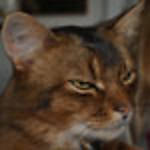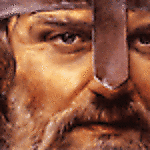While a good number of you have already made good headway into the campaign and some of you have already finished their builds, your campaign leader had been detained by other projects. I have fulfilled the other obligations (mostly) now and finally can join the fray.
I have decided to go for a full scratch build project. The subject is the Küstenwachboot "Niobe" W21 (Costal Watch Boats).

The Küstenwachboote were some of the earliest builds for the Bundesmarine (Navy of the Federal Republic of Germany). They were made to patrol the coasts and harbours and detect every kind of passive threat to shipping in these areas. As such these ships were layed out as mine sweeping vessels from the start, having all the state of the art equipment of the time: a towed paravane sweeping gear and a 40mm Bofors gun the dispose of any mine set afloat. Niobe's only sister Hansa was later equipped with a pressure chamber for diving personnel, while Niobe herself was converted to testing active mine hunting equipment and tracking guided weapons even later on.
By the mid 1950s a mid range 4-digit number of mines (number differ greatly according to several sources) still afloat from two World Wars were a constant thread to shipping in the German Bight (Heligoland Bight) and the Baltic Sea. As such, these little ships were most important to both the military and the merchant navy of the young West German state. The men serving were called "Iron men in wooden vessels" by the press thus underlining their dangerous and very necessary task of keeping national and international shipping save within the confines of the German coast
While we are getting hammered with an ever growing number of big ships of both World Wars and before, the post-war and Cold War navies of this world are still a niche, which has yet to be covered by non-cottage industry. All the more reason for me, to spend my time building something very much off these beaten tracks. The little vessels, just over 4” long is based on a scaled down paper model by Passat Verlag.
I scanned, scaled, and printed the graphics on sticker paper. Then the shapes were cut and transferred to .5mm plastic card. The base plate and hull frames were then assembled to a rough skeleton. The voids were filled with balsa wood, which were then sanded to shape carefully. The deck, made from freight car siding plastic card from evergreen, was added. Many will argue that the spacing between the planks will be too big and the groves too deep, but I think that, since we build representations of historical vessels, we need to compromise between the feasible and the viable.
In the following a number of layers of putty will be used to fill gaps and create an even surface. As many as 3 layers have been added by now and I hope to finish this process within today.

Next update is to follow soon. Now I am much looking forward to attending the ScaleModelWorld in Telford. It’s quite hard to believe, it’s been a year already.
Cheers,
Guido














































